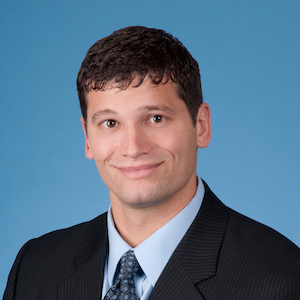A party joined in an inter partes review under Section 315(c) has a statutory right under Section 319 to appeal the Board’s final written decision, even if the party filing the original petition lacks Article III standing to appeal.

Judge Alan Lourie, Federal Circuit.
The Federal Circuit on February 1 affirmed the Patent Trial and Appeal Board’s final written decision in an inter partes review concluding that the claims of a patent directed to a composition for treating epilepsy are not unpatentable. The Federal Circuit first visited the issue of whether three petitioners—Mylan Pharmaceuticals, Breckenridge Pharmaceuticals, and Alembic Pharmaceuticals, all of whom were sued for infringement of the patent more than one year prior to the institution of the IPR, and all of whom were joined in the IPR under 35 U.S.C. § 315(c)—had standing to appeal the Board’s final decision. The Court held that the petitioners had a statutory right, under 35 U.S.C. § 319 to appeal. The Court also discussed whether there was a motivation to combine the “classical isosteres” disclosed in a secondary reference with the lead compound disclosed in a primary reference, ultimately holding that the higher expected potency of the primary reference’s lead compound over the claimed compound would not create a motivation to combine. Mylan Pharms. Inc. v. Research Corp. Techs., Nos. 2017-2088, 2017-2089, 2017-2091, 2019 U.S. App. LEXIS 3282 (Fed. Cir. Feb. 1, 2019) (Before Lourie, Bryson, and Wallach, Circuit Judges) (Opinion for the Court, Lourie, Circuit Judge).
Patent and Claims
The case centered around U.S. Reissue Patent 38,551 (the ’551 patent), owned by Research Corporation Technologies, Inc. (RCT). The claims at issue in the ’551 patent, Claims 8–13, are directed to compounds and pharmaceutical compositions for treating epilepsy and other central nervous system disorders. Claim 8 is directed to the particular compound (R)-N-benzyl-2-acetamido-3-methoxypropionamide, otherwise referred to as lacosamide.
Claim 9 claims “lacosamide in 90 percent or greater purity,” Claim 10 claims “therapeutic compositions comprising the claimed compounds” and Claims 11–13 claimed “use of the compounds for treating central nervous system disorders.”
Grounds
Argentum Pharmaceuticals LLC (Argentum) petitioned for inter partes review of the ’551 patent in November of 2015. Argentum challenged Claims 1–13 on eight grounds. Within those eight grounds, Ground (1) challenged Claims 1–9 as obvious over the references Kohn and Silverman, and Ground (2) challenged Claims 10–13 over Kohn, Silverman, and U.S. Patent 5,378,729.
The Board instituted Argentum’s petition based only on these two grounds. Three days after the Board instituted the petition, Mylan Pharmaceuticals, Breckenridge Pharmaceuticals, and Alembic Pharmaceuticals, the Appellants here, petitioned for review with concurrent motions for joinder. Each of the three new petitioners had been sued by RCT for infringing the ’551 patent, and each were sued over a year prior to their petition for IPR. The Board instituted each petition and joined each of the petitions with the Argentum proceeding. RCT cancelled Claims 1–7 after the Board’s final decision and before this appeal.
Arguments
During the inter partes review, Argentum advanced a lead compound analysis for Ground (1). Argentum offered Kohn—a 1991 article authored by the named inventor of the ’551 patent—as a primary reference providing the proffered lead compound. A study in Kohn disclosed (R,S)-2-acetamido-N-benzyl-2-methylacetamide as a lead compound and replaced the ?-methyl group with functionalized nitrogen, oxygen, or sulfur substituents. Kohn identified that “in the most potent analogues… a functionalized oxygen atom existed two atoms removed from the ?-carbon atom.” The reference also identified a compound 31.
Argentum offered Silverman to supply a motivation to modify the amine of compound 31’s methoxyamino group with a methylene link, as found in lacosamide, “to yield a more stable, synthetically accessible, pharmaceutically common and acceptable moiety.” Silverman is a book chapter on drug design, and the reference provided a list of classical isosteres: –CH2–, –NH–, –O–, –S–, and –Se–. Argentum argued that, of these classical isosteres, “only methylene would result in a more pharmaceutically common and acceptable compound and resolve the potential stability and synthesis concerns presented by the methoxyamino moiety.” According to Argentum, Silverman would have motivated a person of skill in the art to replace the methoxyamino in compound 31 to create lacosamide, and one would have a reasonable expectation of success in doing so.
The Board Rules
The Board disagreed with the petitioners with respect to Ground (1). The Board found “that converting the methoxyamino group would have been viewed as undesirable because the compounds in Kohn 1991 without a methoxyamino or nitrogen-containing moiety at the ?-carbon had reduced activity.” The Board credited evidence suggesting that the methoxyamino group of compound 31 would be expected “to confer significant activity to the compound.” The Board concluded its analysis by holding that the petitioners failed to meet their burden to prove by a preponderance of the evidence that Claims 1–9 would have been obvious, i.e., the petitioners failed to establish a motivation to combine.
As for Ground (2), the Board did not address the merits specifically. The Board reasoned that, since it held Claim 1 is not obvious over the references, the dependent claims would not be obvious. The original petitioner, Argentum, did not appeal the Board’s decision; however, Mylan, Breckenridge, and Alembic, the joined petitioners, all did appeal.
Standing
The Court first addressed the issue of standing. RCT argued that the three joined petitioners lacked standing because they did “not fall within the zone of interests of 35 U.S.C. § 319.” RCT argued that, since RCT brought infringement actions against the three Appellants a year before this IPR petition was filed, each Appellant’s petition was time-barred. Additionally, RCT argued that the “statutory scheme here… does not authorize Appellants to seek federal court review” because the original Petitioner would have lacked Article III standing, i.e., it was merely an “agency matter.”
The Court dismissed RCT’s standing arguments by conducting a brief “zone of interests” analysis. The Court first noted 35 U.S.C. § 315(c) provides that the director “may join as a party to the inter partes review any person who properly files a petition under section 311 that the Director… determines warrants the institution of” an IPR. Additionally, Section 319 states that a “party dissatisfied with the final written decision” of the Board “may appeal the decision pursuant to sections 141 through 144. Any party to the inter partes review shall have the right to be a party to the appeal.” The Court held that, as stated in the statute, any party has the right to appeal the Board’s decision in an IPR, and this must include joined parties, or else the word “party” in Section 315 would have a different meaning than the word “party” in section 319. Accordingly, the Court held that the three joined Petitioner/Appellants had standing to appeal.
The Merits
The Court then proceeded to the merits of the case. The Court agreed that the Board’s findings were supported by substantial evidence. The Court found the evidence that the predicted potency for lacosamide was less than the predicted potency of compound 31 to be persuasive. Accordingly, the Court agreed that one of skill in the art would not have been motivated to modify the amine of compound 31’s methoxyamino group with a methylene link, as found in lacosamide.
The Court also held that the Board did not err in concluding that the Appellants did not meet their burden of establishing obviousness for the dependent claims (Claims 11–13), because “[d]ependent claims, with added limitations, are generally not obvious when their parent claims are not.”
Finally, as a last alternative, the Appellants requested the case be remanded in light of SAS Institute, Inc. v. Iancu, 138 S. Ct. 1348 (2018). The Court held that the party’s request was waived because the request was made more than six months after the SAS decision.
In rejecting the Appellant’s arguments that the Board erred in its non-obviousness conclusion, the Court affirmed the Board’s conclusion that claims 8–13 would not have been obvious at the time of the invention.

![[IPWatchdog Logo]](https://ipwatchdog.com/wp-content/themes/IPWatchdog%20-%202023/assets/images/temp/logo-small@2x.png)


![[Advertisement]](https://ipwatchdog.com/wp-content/uploads/2024/04/UnitedLex-May-2-2024-sidebar-700x500-1.jpg)
![[Advertisement]](https://ipwatchdog.com/wp-content/uploads/2024/04/Artificial-Intelligence-2024-REPLAY-sidebar-700x500-corrected.jpg)
![[Advertisement]](https://ipwatchdog.com/wp-content/uploads/2024/04/Patent-Litigation-Masters-2024-sidebar-700x500-1.jpg)

![[Advertisement]](https://ipwatchdog.com/wp-content/uploads/2021/12/WEBINAR-336-x-280-px.png)
![[Advertisement]](https://ipwatchdog.com/wp-content/uploads/2021/12/2021-Patent-Practice-on-Demand-recorded-Feb-2021-336-x-280.jpg)
![[Advertisement]](https://ipwatchdog.com/wp-content/uploads/2021/12/Ad-4-The-Invent-Patent-System™.png)






Join the Discussion
10 comments so far.
valuationguy
February 14, 2019 02:26 pmWhile I may agree technically with your definitions (IANAL)….the choice of terms doesn’t really matter much as the PTAB never has to get into the nitty-gritty of exactly why it accepted or rejected a petition for IPR….so the difference between ‘posion fruit’ evidence and ‘expunged’ evidence (from a previous case no less) isn’t going to matter. Instead the PTAB will just generally state the petition has or has not presented ‘evidence’ which indicates a reasonable chance of success in invalidating the patent.
In other words…for the PTAB (not necessarily true in federal district courts) the poison fruit evidence is only poison fruit for the party which improperly offered it and is limited to the proceeding it was first offered. Given the ability of serial challenges to patents allowed by the AIA…being dependent only on the Director’s discretion (which is usually delegated to the panel itself)…nothing prevents that evidence from being used in a different IPR proceeding by a different party…even if it targets the exact same patent claims.
Anon
February 13, 2019 04:34 pmThat’s a difference between “poison fruit” and expungement.
With expungement, one would treat a reintroduction as something that was not seen before. With “poison fruit,” there is NO ‘re-introduction’ involved***
*** Admittedly, I am glossing over a few details of evidentiary law, and perhaps, I am incorrect in doing so.
valuationguy
February 13, 2019 02:10 pmThat was kinda the point….however, nothing the PTAB does is going to prevent a different new (non-time-barred) petitioner from picking up that same “poison fruit” info and using it to try and initiate a new IPR.
At that point the Director would again have discretion to initiate or not….and given the apparent “success” of the first try to invalidate the patent (having result throw out ‘only’ due to a technicality)…the Director could very well justify initiating the process again (since double/triple/etc jeopardy doesn’t exist for patents at the PTAB).
Anon
February 13, 2019 11:36 am…at least be expunged?
How about a “fruit from the poisoned tree” analogy and placing any such ill-gotten items out of reach (beyond merely expunged and being NOT usable).
valuationguy
February 13, 2019 08:34 amYes….my point is that in this case the parties which were ultimately joined couldn’t properly file a petition under section 311….so their request for joinder SHOULD be beyond the discretion of the Director to join to any other petitioner’s IPR.
As a result of the Director’s improperly joining parties which he had no proper discretion to join to the IPR….you then have a due process issue in that EVERY submission from the joined parties’ lawyers is de facto an improper EX PARTE COMMUNICATION to the PTAB ‘court’…..an express and clear violation of the PTO’s own procedures which govern PTAB trials. In such a case…EVERY argument and piece of evidence submitted by the improperly joined parties should AT LEAST be expunged from the record.
Anon
February 12, 2019 08:48 pmvaluationguy,
While the rule (CFR level – see below) says nothing about the party making the request for joinder):
37 CFR 42.122(b) Request for joinder. Joinder may be requested by a patent owner or petitioner. Any request for joinder must be filed, as a motion under § 42.22, no later than one month after the institution date of any inter partes review for which joinder is requested. The time period set forth in § 42.101(b) shall not apply when the petition is accompanied by a request for joinder.
The law section providing for joinder is 35 USC315(c) (emphasis added, sentences separated for grammatical effect):
(c) JOINDER.—
If the Director institutes an inter partes review,
(that’s the original)
the Director, in his or her discretion, may join as a party to THAT inter partes review
(adding to THAT original)
any person who properly files a petition under section 311
(this I believe is the CRUX of your point)
that the Director,
after receiving a preliminary response under section 313 or the expiration of the time for filing such a response,
(not at point here)
determines warrants the institution of an inter partes review under section 314.
So while there is indeed TREMENDOUS discretion afforded to the Director (and his assigns) – vis a vis in his or her discretion, and determines warrants – you do appear to be correct that even before such discretion may come into play, there is a HARD FLOOR of “any person who properly files a petition under section 311“
valuationguy
February 12, 2019 05:25 pmWhat would have been even better is for the patent owner to have argued coherently that while the statute allows “anyone” [who properly (my emphasis) petitions for IPR] to request joinder (despite being past the 1 year time-bar FOR THE PETITION BEING JOINED) to an existing IPR….the key is that any party time-barred from filing its own IPR CANNOT PROPERLY PETITION FOR IPR in the first place….so they can’t meet the the KEY PREREQUISITE for requesting joinder in the first place.
Anon
February 12, 2019 02:53 pmTo me, this is a “water is still wet” type of story.
Given proper joinder, why in the world would not a party having Article III standing be denied its place in the second half of the two-fora designed system of the AIA?
It would have been note-worthy had the party designations been different. For example, had a “NON Article III standing” party been joined (properly) to an original party having Article III standing, and then having that original party drop out, and the non-Article III party STILL attempt to bootstrap into into the judicial branch, and THIS be allowed, THEN you would have a real story.
As it is, nothing to see here, let’s keep moving.
Dan Hanson
February 12, 2019 02:12 pmThe Mylan Pharmaceuticals case (slip op. at 16), as well as the case of Amerigen Pharm. Ltd. v. UCB Pharma GMBH (slip op. at 23), decided 11 January 2019, support the principle that proving a motivation to modify the prior art in some fashion is insufficient to establish obviousness. Any evidence of motivation to modify should be directed to reaching the claimed subject matter, rather than a motivation to modify in general.
Night Writer
February 12, 2019 01:51 pmLourie needs to retire.